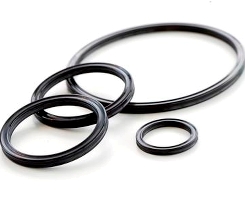Elastomer
Elastomer (from the Greek elastos = "flexible" and meros = part) is a polymer that has elastic properties. The molecular chains of elastomer are mutually connected via chemical bonds (known as crosslinks, either covalent bonds or hydrogen bonds), because the chains have a degree of mutual movement. The elastic properties are due to the following mechanisms: External forces acting on the material will cause it to deform (compress or stretch), and the molecular chains are brought into an ordered state with low entropy; when the external force ceases to be applied, the chains will return to their disordered initial state with high entropy, and the material will thus return to its initial shape.
Vulcanised natural rubber
Vulcanised natural rubber was the first developed elastomer that had a practical application. The natural rubber consists of unbound chains of isoprene. When vulcanised the chains are bonded with sulphur bonds, which gives the material its elastic properties. However, excessive vulcanisation will lead to so many sulphur bonds that the molecular chains loose their mutual mobility, causing the material to become hard and inelastic. During World War Two, many synthetic elastomers were developed, which have been important for society, partly because they have replaced the need to use natural rubber and partly because of applications where the material must have special properties. Examples of important elastomers are PMMA, natural rubber, butadiene rubber, butyl rubber, ethylene propylene rubber, fluorine rubber, nitrile rubber, neoprene, silicon rubber, styrene butadiene rubber and thiokol rubber.



















